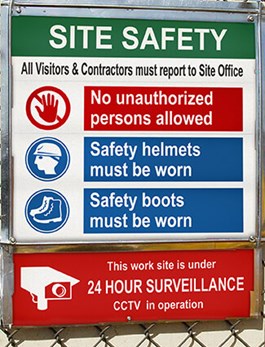Signs Your Excavation Site Needs Shoring Up

Workers on construction excavation projects are doing more than moving dirt, rock, and other materials around. They are preparing the land for even bigger construction activities: creating a solid foundation for what is to come and securing the environment around it. That's why when something goes wrong or fails on an excavation job site, the results can be devastating. With many people, equipment, and responsibilities, communication and safety are critical daily.
Complex Conditions
Excavations of all types require a variety of tools and techniques for safety and efficiency. A few things that are standard on all worksites are communication and compliance. Most OSHA citations on construction excavation sites are due to a lack of communicating trenching activities, traffic control, and hazard training. For example, in 2019, an excavation company was cited for not protecting trench and excavation areas. The company reportedly lacked personal protection equipment and failed to perform hazardous atmosphere testing, among other problems.
"In a matter of seconds, employees can be seriously or fatally injured when an excavation or trench collapses," said Courtney Bohannon of OSHA in Jackson, Mississippi. "OSHA standards require protective systems be installed and inspected daily before work begins."
A daily job site evaluation is critical for safety and overall project efficiency. If anything is amiss on an excavation site, it can be costly in personnel, time, and finances. It can even create a domino effect of problems from there. In addition to the OSHA top 10 most common violations, here are several items to look out for during a job site evaluation before workers enter:
- Changes: Overnight moisture and other weather systems can affect soil conditions. It can also create new hazards such as slippery surfaces.
- Traffic Controls: Prevent accidents and collisions involving vehicles and people. Designate worksite exits and entrances as a whole and for projects such as trenching. Build a separate area for foot traffic crossings and vehicle crossing areas. These traffic control activities near work areas can also help prevent trench cave-ins and equipment falls.
- Above and Below Controls: Mark utilities (call 8-1-1 to help mark before digging). Alert workers to power lines and ground utility lines.
- Chemicals and gasses: Test the atmosphere in trenches and remind workers of safe distances between chemicals, gasses, and people and equipment. Store and use chemicals safely.
- Obstructions: Remind workers to keep equipment loads stacked properly and low or high enough to not obstruct safe views of surrounding activities. OSHA suggests the designation of a spotter or flagger.
- Worker Behavior: Look for fatigue, depression, and other behaviors a worker might be facing that could create unsafe actions. This includes task rushing. Make sure workers have access to the correct PPE and high-visibility clothing.

Safe Conditions Ahead
Job site evaluations should focus on safety and communication. It's worthwhile for companies to join safety alliances and continuous training. There are safety efforts like OSHA's National Emphasis Program and the National Utility Contractors Association trench safety event that focus on preventing injuries relating to trenching and excavation collapses.
Construction projects of every size and kind need tools that will work for the site's unique needs. While no one can predict the future, a job site analysis helps prepare for the potential worse. When conducting an evaluation, think of the potential problems and have solutions ready. This includes having ready PPE, fall arrest systems, excavation protective systems, and emergency and first aid.
There are cost-effective and easy to implement solutions to keep communication flowing on an excavation job site. Once plans are in place for daily work schedules, go over them with workers. Use reminder tools to stress the safety messages and keep workers thinking about best practices for their tasks. For example, use colored cones and other visuals to create various boundaries. Post signs that specify load limits, load heights, and directional flows for pedestrians and equipment. Emergency exits and contact information can also be on display for quick reference in a difficult situation. Signs are important for workers, visitors, and to help protect the public.
Related Resources

Improve Falling Objects, Struck-Bys in Construction
Falling objects and struck-bys are some of the most common job hazards that lead to injury or death in ...
Read
ANSI Issues Dropped Objects Standard
To help eliminate the hazards of dropped objects from heights, the International Safety Equipment Association ...
Read
Inspection Drones Take Safety to New Heights
Drone inspections are becoming a big benefit for businesses. These aerial devices can enter dangerous work ...
Read.png)





